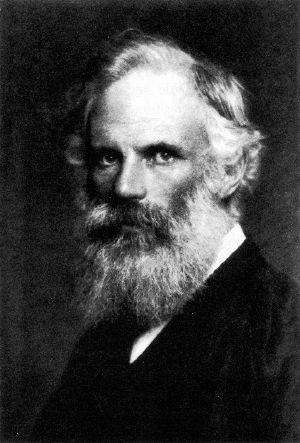Difference between revisions of "George FitzGerald" - New World Encyclopedia
(imported latest version of article from Wikipedia) |
(added credit and category tags, deleted foreign language links) |
||
| Line 24: | Line 24: | ||
{{DEFAULTSORT:FitzGerald, George Francis}} | {{DEFAULTSORT:FitzGerald, George Francis}} | ||
| − | |||
| − | |||
| − | |||
| − | |||
| − | |||
| − | [[ | + | [[Category:Physical sciences]] |
| − | [[ | + | [[Category:Biographies of Scientists and Mathematicians]] |
| − | [[ | + | [[Category:Biography]] |
| − | [[ | + | [[Category:Physics]] |
| − | {{ | + | |
| + | {{credit|126343280}} | ||
Revision as of 05:40, 30 July 2007
George Francis FitzGerald (3 August 1851 – 22 February 1901) was a professor of "natural and experimental philosophy" (i.e., physics) at Trinity College, Dublin, in the late 19th century.
FitzGerald was born at No 19 Lower Mount Street in Dublin on 3 August 1851 to the Reverend William FitzGerald and his wife Anne Francis Stoney. Professor of Moral Philosophy in Trinity and vicar of St Anne's, Dawson Street at the time of his son's birth, William FitzGerald was consecrated Bishop of Cork in 1857 and translated to Killaloe in 1862. George returned to Dublin and entered Trinity as a student at the age of 16. He became a Fellow of Trinity in 1877 and spent the rest of his career at the College.
Along with Oliver Lodge, Oliver Heaviside, and Heinrich Hertz, FitzGerald was a leading figure among the group of 'Maxwellians" who revised, extended, clarified, and confirmed James Clerk Maxwell's theory of the electromagnetic field in the late 1870s and 1880s.
In 1883, following from Maxwell's equations, he suggested a device for producing rapidly oscillating electric current, to generate electromagnetic waves, a phenomenon first shown experimentally by Heinrich Hertz.
However, he is better known for his conjecture in 1889 that if all moving objects were foreshortened in the direction of their motion, it would account for the curious result of the Michelson-Morley experiment. FitzGerald based this idea in part on the way electromagnetic forces were known to be affected by motion; in particular, he drew on equations that had been derived a short time before by his friend Oliver Heaviside. The Dutch physicist Hendrik Lorentz hit on a very similar idea in 1892 and developed it more fully in connection with his theory of electrons. The so-called FitzGerald-Lorentz contraction or Lorentz-FitzGerald contraction hypothesis later became an important part of Albert Einstein's special theory of relativity, published in 1905.
Long a sufferer from digestive problems, George Francis FitzGerald succumbed to a perforated ulcer at home on 22 February 1901.
FitzGerald was the nephew of George Johnstone Stoney, the Irish physicist who invented the term "electron".
ReferencesISBN links support NWE through referral fees
- G.F. Fitzgerald, The ether and the earth's atmosphere, Science 13, 390 (1889).
External links
- John J. O'Connor and Edmund F. Robertson. George FitzGerald at the MacTutor archive
- Millenium Trinity Monday Memorial Discourse by Professor J. M. D. Coey
Credits
New World Encyclopedia writers and editors rewrote and completed the Wikipedia article in accordance with New World Encyclopedia standards. This article abides by terms of the Creative Commons CC-by-sa 3.0 License (CC-by-sa), which may be used and disseminated with proper attribution. Credit is due under the terms of this license that can reference both the New World Encyclopedia contributors and the selfless volunteer contributors of the Wikimedia Foundation. To cite this article click here for a list of acceptable citing formats.The history of earlier contributions by wikipedians is accessible to researchers here:
The history of this article since it was imported to New World Encyclopedia:
Note: Some restrictions may apply to use of individual images which are separately licensed.

